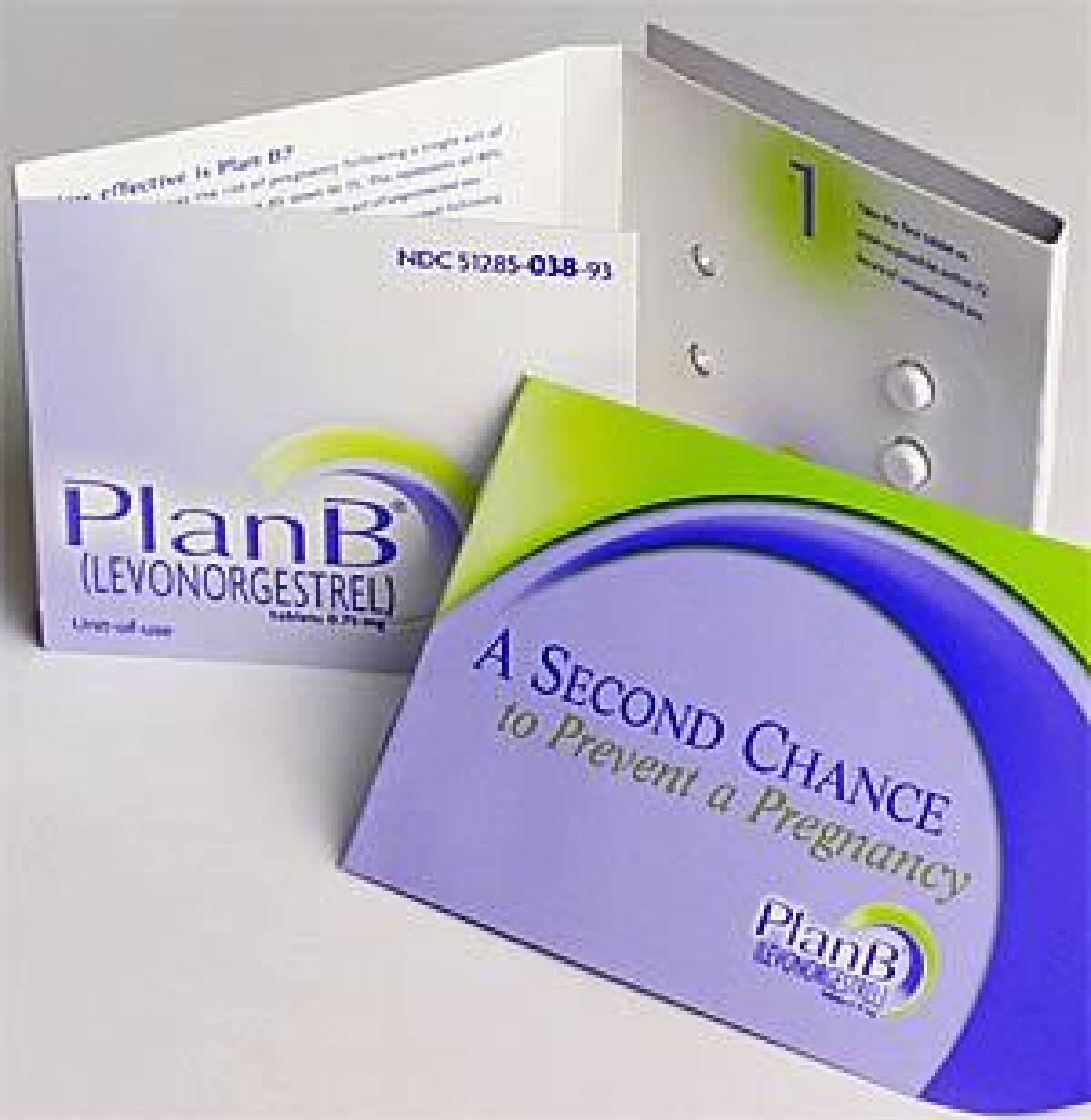Teens and the morning after pill

Two weeks ago, a federal judge ordered the U.S. Food and Drug Administration to allow 17-year-olds to buy the emergency contraceptive pill Plan B without a prescription and to consider allowing such purchases by younger girls as well. Previously, the agency had set 18 as the cutoff age, meaning younger girls had to consult a doctor to get the pill.
The FDA is reviewing the court’s decision, spokeswoman Rita Chappelle says. The agency can comply with the order or appeal the decision, says lawyer Ralph Hall, a professor at the University of Minnesota Law School in Minneapolis with expertise in drug regulation. With an appeal, the ordered change could be delayed.
Facing a potentially fundamental change in how this nation approaches contraceptives for girls and young women, we look at what Plan B does, and doesn’t, do -- and the controversy about restrictions on access.
Commonly known as the “morning after pill,” Plan B works largely by preventing ovulation. If the ovary doesn’t release an egg, that egg can’t be fertilized by any sperm waiting to meet it. The pill also might hinder sperm travel by thickening mucus secretions and inhibit implantation by affecting the uterine lining.
FOR THE RECORD:
Plan B contraceptive: An article in Monday’s Health section about teenagers and the morning-after pill said a recent Los Angeles County Department of Public Health survey found that nearly 25% of pharmacies were providing emergency contraception to teens without a prescription. The study was conducted by UC San Francisco researchers and referred to pharmacies statewide. —
Studies show the effectiveness of Plan B to be about 89% if treatment is started within three days. Emergency contraception, however, is not as effective at preventing pregnancy as regular use of condoms or birth control pills. Nor does it protect against sexually transmitted diseases.
Groups that support increased access to emergency contraception, such as the Center for Reproductive Rights, say the court’s decision puts science ahead of politics. They also say it could reduce unplanned pregnancies and abortions.
Groups that oppose increased access, such as the Family Research Council, say it could increase promiscuity.
When the drug’s maker, Barr Pharmaceuticals, applied for over-the-counter status in 2003, two scientific advisory committees for the FDA found that the pill was safe and that it could be used appropriately by patients -- key factors in approving a switch to over-the-counter from prescription.
The recent ruling took the FDA to task for allowing politics and ideology to trump the scientific evidence, particularly in choosing the threshold age of 18. It’s very rare for a court to impose on the agency’s authority, Hall says, rather than ordering more review. But in this case, the evidence for safety in 17-year-olds, at least, was on record and very clear. Nine states, including California, allow over-the-counter sales of Plan B to minors by trained pharmacists. A recent survey done by the L.A. County Department of Public Health found that nearly 25% of pharmacies had pharmacists who had taken the necessary training and thus were providing emergency contraception to teens without a prescription, according to Dr. Susie Baldwin, chief of the health assessment unit there.
Scientific evidence supports making the pill available over the counter to all ages. Officially, the FDA cited insufficient evidence for safety in younger teens, but many doctors pooh-pooh that claim. “That means there wasn’t enough data studying Plan B in teenagers specifically,” says Dr. Robert Kauffman, professor and director of reproductive medicine and infertility at Texas Tech University Health Sciences Center in Amarillo, who has written about emergency contraception.
A one-month course of birth control pills containing the synthetic progestin levonorgestrel (the key ingredient in most morning-after pills) delivers higher doses than the amount in a single packet of Plan B, Kauffman says. “If birth control pills have not proven to be dangerous in teenagers, why would Plan B?” Oral contraceptives have 100 to 150 micrograms of levonorgestrel per pill; the emergency contraceptive has two 750 microgram levonorgestrel pills, to be taken 12 hours apart.
“When Tylenol went over the counter, nobody questioned its safety in adolescent women,” says Dr. Anita Nelson, professor of obstetrics and gynecology at Harbor-UCLA Medical Center. Nelson dismisses concerns about developing girls taking hormones. Side effects associated with long-term use of birth control pills are related to the estrogen in those pills and have been greatly minimized with low-dose formulations. Further, Plan B does not contain estrogen.
More to Read
Start your day right
Sign up for Essential California for news, features and recommendations from the L.A. Times and beyond in your inbox six days a week.
You may occasionally receive promotional content from the Los Angeles Times.






